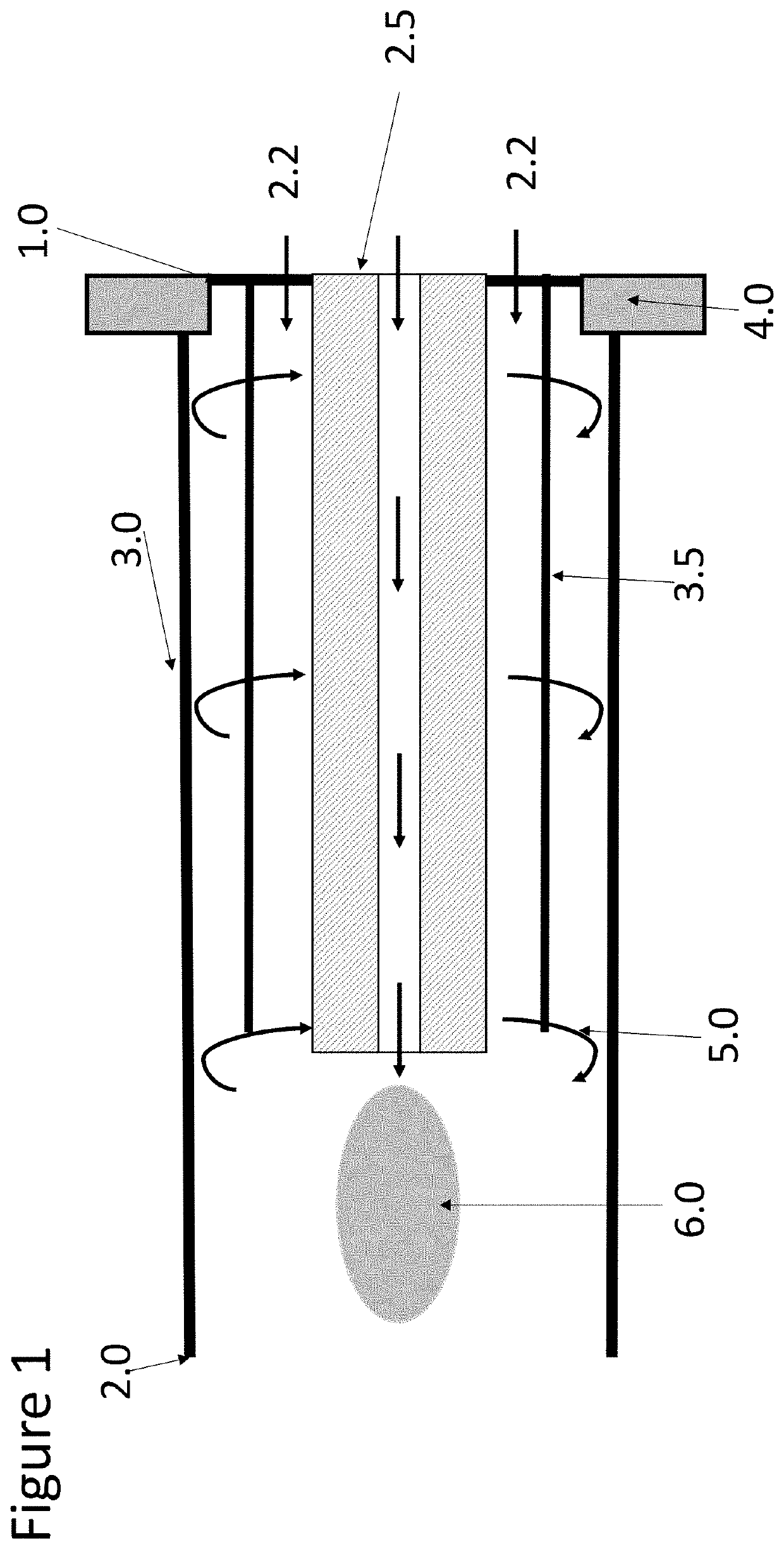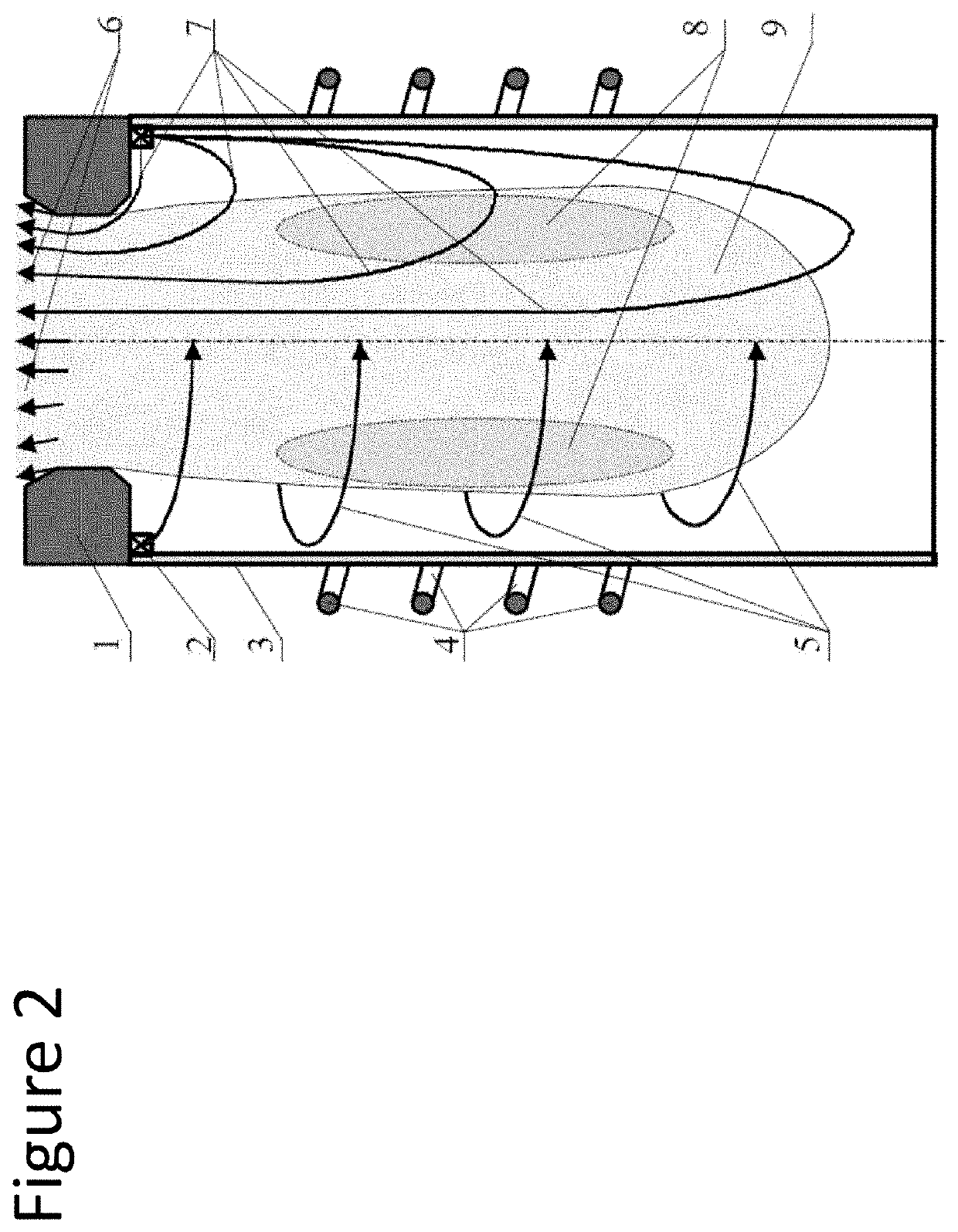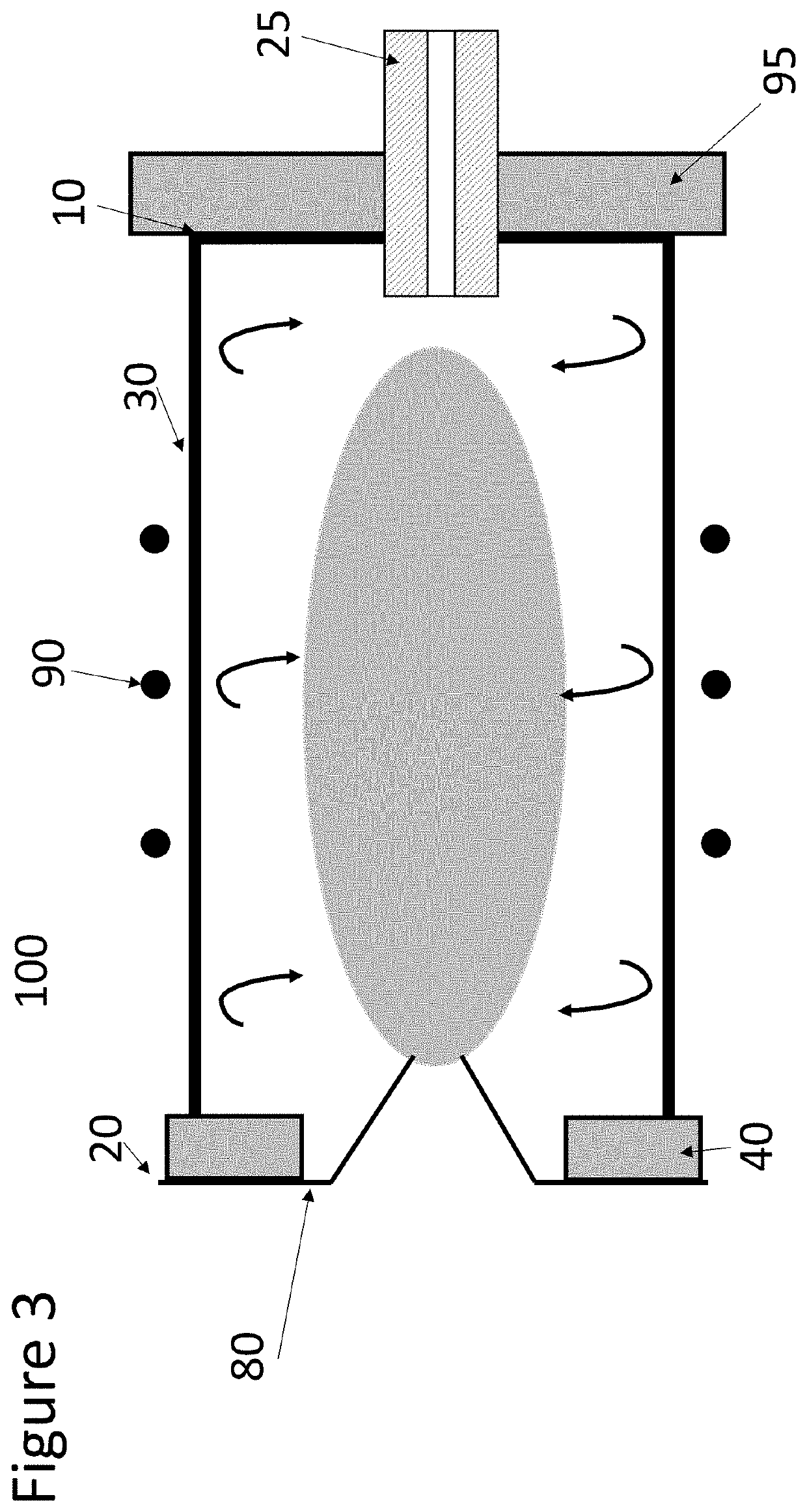Inductively coupled plasma torch with reverse vortex flow and method of operation
a plasma torch and vortex flow technology, applied in the direction of material excitation, electric discharge tubes, particle separator tubes, etc., can solve the problems of detector surface damage, detector needs replacement, and the upper limit of quantitative capabilities of the detector, so as to reduce the gas consumption, the vortex is more stable, and the effect of reducing the amount of gas
- Summary
- Abstract
- Description
- Claims
- Application Information
AI Technical Summary
Benefits of technology
Problems solved by technology
Method used
Image
Examples
Embodiment Construction
[0032]In general terms, the analyser apparatus disclosed herein comprises two broadly characterised systems for performing imaging elemental mass analysis.
[0033]The first is a sampling and ionisation system.
[0034]In embodiments of the apparatus of the invention for analysis of particulate samples in solution (e.g. single cells or beads), the sampler of the sampling and ionisation system may comprise a particle solution sample, such as a sample loop-based system and / or autosampler system, that provides a flow of principally individual particles to the ionisation system downstream of the sampling system, typically via a nebulizer. The particles are converted into ions, via a separate ionisation system comprising the ICP torch of the invention downstream of the sampler.
[0035]In embodiments of the apparatus of the invention for analysis of planar samples, e.g. samples on sampler carrier, such as a tissue section or a cell smear, the sampler of the sampling and ionisation system contains...
PUM
| Property | Measurement | Unit |
|---|---|---|
| length | aaaaa | aaaaa |
| length | aaaaa | aaaaa |
| power consumption | aaaaa | aaaaa |
Abstract
Description
Claims
Application Information
 Login to View More
Login to View More - R&D
- Intellectual Property
- Life Sciences
- Materials
- Tech Scout
- Unparalleled Data Quality
- Higher Quality Content
- 60% Fewer Hallucinations
Browse by: Latest US Patents, China's latest patents, Technical Efficacy Thesaurus, Application Domain, Technology Topic, Popular Technical Reports.
© 2025 PatSnap. All rights reserved.Legal|Privacy policy|Modern Slavery Act Transparency Statement|Sitemap|About US| Contact US: help@patsnap.com



